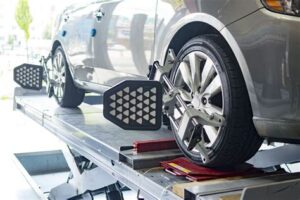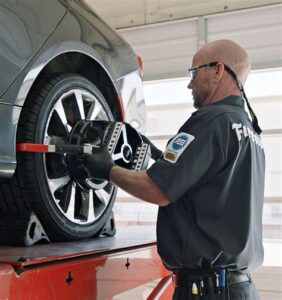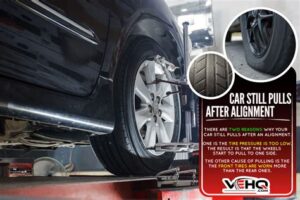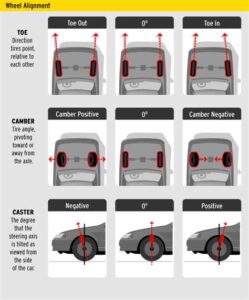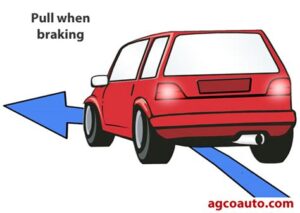Are you driving a lowered car and wondering if you’re getting the most out of your ride? Proper alignment is crucial for maximizing your vehicle’s performance, especially when modifications have altered its stance. Lowered car alignment isn’t just about aesthetics; it plays a vital role in handling, tire wear, and overall safety on the road. In this article, we’ll delve into the intricacies of lowered car alignment, explore how lowered cars affect wheel geometry, and identify common signs of misalignment you should watch out for. Additionally, we’ll provide actionable steps to ensure your vehicle stays aligned and highlight the benefits of regular alignment checks. Whether you’re a seasoned car enthusiast or new to the world of lowered vehicles, understanding alignment is essential for an enjoyable driving experience. Let’s gear up for a smooth ride!
Understanding The Importance Of Lowered Car Alignment
When it comes to lowered cars, achieving the right alignment is crucial for optimal performance and safety. Lowering a vehicle changes its ride height, which can significantly impact the suspension geometry. Proper alignment ensures that the tires make appropriate contact with the road, promoting even tire wear, improved handling, and a comfortable ride.
One of the primary reasons for prioritizing alignment in lowered cars is to maintain accurate steering response. A well-aligned vehicle allows for better control, reducing the chances of oversteering or understeering, which can be particularly dangerous during cornering. Furthermore, misalignment can lead to increased tire wear, which not only affects the longevity of your tires but can also compromise vehicle safety.
Another key aspect is the prevention of premature wear on suspension components. With the added stress that comes from lowering a car, maintaining proper alignment helps to mitigate potential damage to suspension parts, keeping repair costs down.
Additionally, regular alignment checks tailored for lowered cars can greatly enhance overall driving experience. Drivers can enjoy improved fuel efficiency, as correct alignment minimizes rolling resistance, allowing the car to move more freely on the road.
Paying careful attention to alignment is essential for anyone owning a lowered car. Not only does it enhance performance and handling, but it also contributes to safety and the longevity of tires and suspension components. Regular alignment checks should be a non-negotiable part of ownership to ensure your lowered car performs at its best.
How Lowered Cars Affect Wheel Geometry And Handling
Lowering a car changes its suspension setup, which in turn significantly affects wheel geometry and vehicle handling. Understanding these changes is crucial for anyone considering a lowered car.
When a car is lowered, several key adjustments occur:
| Aspect | Effect of Lowering |
|---|---|
| Camber | Increased negative camber; can improve cornering grip but may lead to uneven tire wear. |
| Toe | May become misaligned; improper toe settings can lead to unstable handling. |
| Roll Center | Lowered roll center can improve stability during cornering but may also affect ride comfort. |
| Center of Gravity | Lowering the car decreases the center of gravity, enhancing handling but making the suspension more sensitive to bumps. |
Along with these alterations, the general handling characteristics of a lowered car can be significantly influenced. For example:
– Improved Cornering: The lower center of gravity allows the car to stay flatter in turns, enhancing stability.
– Increased Responsiveness: A lowered car typically reacts more quickly to steering inputs, providing a sportier feel.
– Potential for Reduced Comfort: While cornering performance may improve, ride comfort can decrease due to stiffer suspension and less shock absorption.
Overall, while lowering a car can enhance its aesthetic appeal and performance on the road or track, it is essential to understand these impacts on wheel geometry and handling. Proper alignment adjustments and regular maintenance can help mitigate potential issues and ensure that a lowered car performs at its best.
Common Signs Of Misalignment In Lowered Cars
When it comes to lowered cars, proper alignment is critical to ensure optimal performance and tire longevity. Misalignment can hinder your driving experience and lead to other mechanical issues. Here are some common signs that your lowered car may be misaligned:
- Uneven Tire Wear: One of the most noticeable signs of alignment issues is uneven tire wear. If you observe that certain parts of your tires are wearing down faster than others, it’s a clear indication that alignment may be off.
- Pulling to One Side: If your car tends to drift or pull to one side while driving straight, it might signify misalignment. This can be particularly dangerous, especially at higher speeds.
- Steering Wheel Misalignment: A crooked steering wheel while driving straight can suggest that your vehicle’s wheels are not aligned correctly. You should routinely check how your steering wheel centers itself when the car is moving straight.
- Increased Vibration: Any unusual vibrations felt through the steering wheel or the car body can result from misalignment and should not be ignored.
- Difficulty in Steering: If you notice that your steering feels off or is harder to control, this could indicate a problem with alignment, especially in a lowered car.
Being aware of these signs can help you take timely actions to correct any misalignment issues, ensuring a smoother and safer driving experience.
Steps To Ensure Proper Alignment For Lowered Cars
Ensuring proper alignment for lowered car models is essential for optimal performance and safety. Here are the key steps to achieve proper alignment:
By following these steps, you can help maintain proper alignment for your lowered car, ensuring better handling, improved tire life, and enhanced driving safety.
The Benefits Of Regular Alignment Checks For Lowered Cars
Regular alignment checks for lowered cars are vital for maintaining optimal performance and safety. Here are several key benefits:
| Benefit | Description |
|---|---|
| Improved Handling | Proper alignment ensures that your vehicle handles predictably. This is especially crucial for lowered cars, which often experience altered handling dynamics. |
| Enhanced Tire Life | Regular alignment checks can prevent uneven tire wear, extending the lifespan of your tires crucial for lowered cars. |
| Better Fuel Efficiency | When your wheels are correctly aligned, it reduces rolling resistance, potentially improving fuel efficiency. |
| Increased Safety | Misalignment can lead to unsafe driving conditions, such as poor traction and increased stopping distances. |
| Cost-Effective Maintenance | Detecting alignment issues early can save you from more significant repairs down the line, making regular checks a cost-effective strategy. |
Regular alignment checks for lowered cars can significantly enhance performance, extend tire life, improve fuel efficiency, increase safety, and ultimately save you money. Prioritizing these checks should be an integral part of any lowered car maintenance routine.
Frequently Asked Questions
What is lowered car alignment?
Lowered car alignment refers to the adjustment of a vehicle’s wheels and suspension after the ride height has been reduced, typically for performance or aesthetic reasons.
Why do people lower their cars?
People lower their cars for various reasons, including improving handling, enhancing aesthetic appeal, reducing center of gravity, and increasing aerodynamics.
What are the benefits of proper alignment after lowering a car?
Proper alignment after lowering a car can improve tire wear, enhance driving stability, optimize handling performance, and ensure safety on the road.
How is lowered car alignment performed?
Lowered car alignment is performed by adjusting the camber, caster, and toe settings of the wheels using specialized equipment to ensure they are aligned correctly with the new ride height.
Are there any potential issues with lowering car alignment?
Yes, potential issues include uneven tire wear, compromised handling, and increased stress on suspension components if not aligned correctly.
How often should I get my car’s alignment checked after lowering it?
It’s recommended to have your car’s alignment checked immediately after lowering and then periodically, approximately every 6 months or after any significant suspension work.
Can I do the alignment myself after lowering my car?
While it’s possible to do some basic alignment adjustments at home with the right tools, it’s generally advisable to have a professional handle the alignment to ensure it’s accurate and safe.
